Sensing Soil
What can community gardening teach us about climate change and migration?
'Sensing Soil' was a pioneering partnership between artist and lecturer at Goldsmiths Dr Ros Gray, soil scientist Dr Jacqueline Hannam of Cranfield University, artist Harun Morrison and Lewisham Refugee and Migrant Network.
The project helped to connect the dots between climate change and migration through art, science, and gardening. Across an innovative series of hands-on workshops, the project firmly rooted the voices of refugees and migrants in climate discussions.
The ground-breaking venture, funded by the NERC (National Environmental Research Council) ran between October 2021 to August 2022, working with a group recruited in collaboration with the Lewisham Refugee and Migrants Network (LRMN).
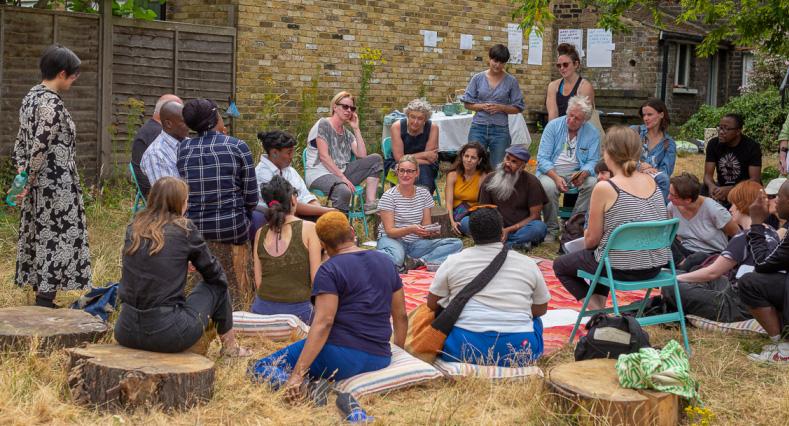
Workshops
Through a series of ten experimental workshops, participants explored the climate adaptation properties of soil. The workshops were a space to share knowledge about soil-care through sensory experiences.
During the sessions, participants explored how soil supports life and captures carbon through tasting, touching and smelling the soil.
Attendees collaborated on activities like building a herb spiral and digging a pond while reflecting on soil science in relation to homeland and belonging.
Goldsmiths Art Research Garden
Goldsmith’s Art department are in the process of converting the garden of 41-43 Lewisham Way into an Art Research Garden and laboratory.
This vibrant space is an essential resource, from which to investigate cultural and scientific aspects of urban ecology while enjoying the therapeutic and social benefits of gardening. The garden became a focal point during 'Sensing Soil', where participants engaged in regenerative gardening practices.
Open day
Sensing Soil concluded with a hugely successful Open Day attracting over 60 attendees.
Hosted at the Art Research Garden the event featured interactive activities, seed-sharing, and botanical drinks made from foraged plants. Environmental justice activist Graham Burnett and community activist Carole Wright led engaging sessions, reflecting Sensing Soil’s commitment to climate advocacy through community practices.
During the event a diverse public audience accessed the site through the open gate on Lewisham Way and informally joined in the activities.
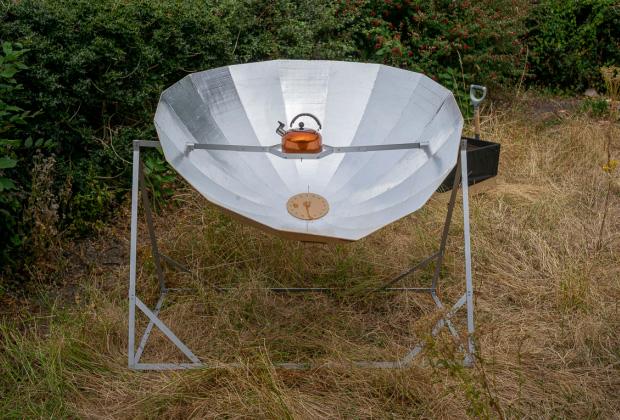
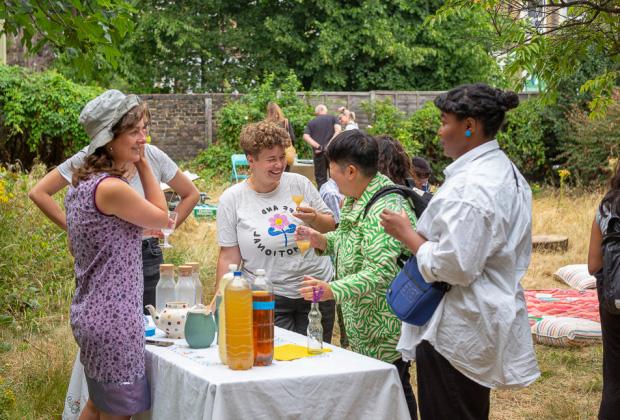
It’s magic! What we did today was beautiful!
An attendee about the open day
'Sensing Soil' is a testament to the power of collaboration, creativity, and community engagement in addressing the urgent challenges of climate change. The project fostered new conversations and learnings around migration and worked to recognise climate change as a reason for displacement
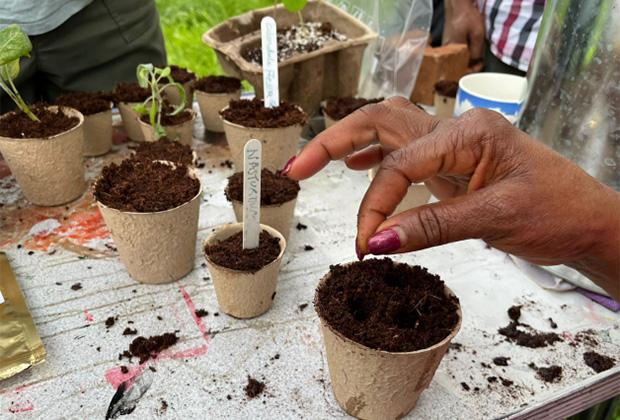
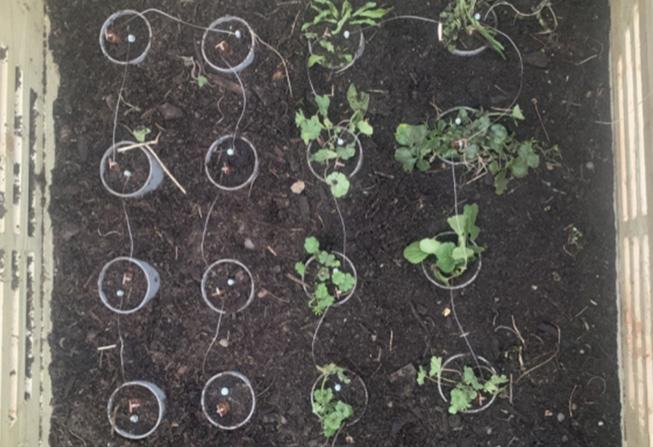
Following on from the open day
The Art Research Garden at Goldsmiths will continue to evolve into an accessible site for ecological research.
Seeding the Garden
Building on the success and learnings of 'Sensing Soil', Goldsmiths Civic Catalyst funding was secured for a follow-on study 'Seeding the Garden: Our Place in Lewisham’s Green Infrastructure'.
Drawing on Participatory Research funding from Research England and led by curator and horticulturalist Dr Anna Colin alongside a team of research students, this project explored how the Art Research Garden might become a key research and community resource for south-east London.
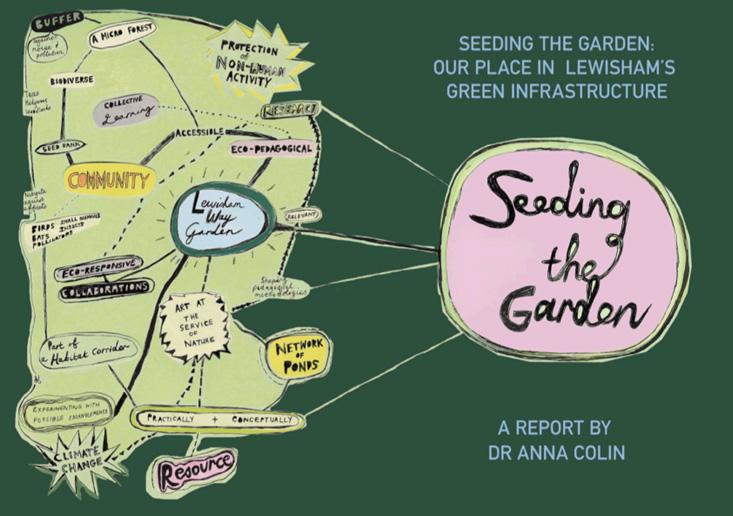
Local partners
Working with local partner institutions such as The Horniman Museum and Gardens, the Albany Theatre, Wildcat Wilderness, Lewisham Council and Lewisham Refugee and Migrant Network, the study investigates how local green spaces can serve their neighbourhoods and form part of Lewisham’s biodiversity network, and the role that the Goldsmiths Art Research Garden might play within this.
Singing Compost
'Seeding the Garden' also commissioned a permanent installation within the Art Research Garden itself. As part of the project, Harun Morrison was commissioned to design a composting area for the Art Research Garden. Morrison collaborated with artist Paul Granjon to make Singing Compost [heap #1], which was installed in April 2023.
The ‘singing’ compost uses microbial fuel cells to produce energy. The small current emitted by the microbes is captured by 16 mud batteries that power a frugal sound system, making tangible the invisible activity of the microbes.
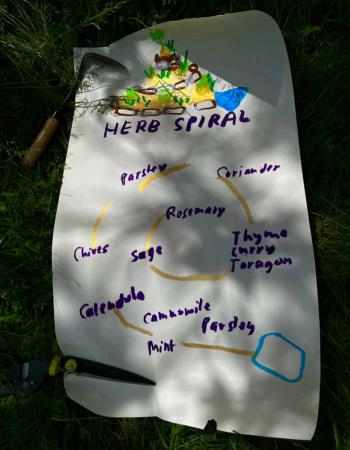
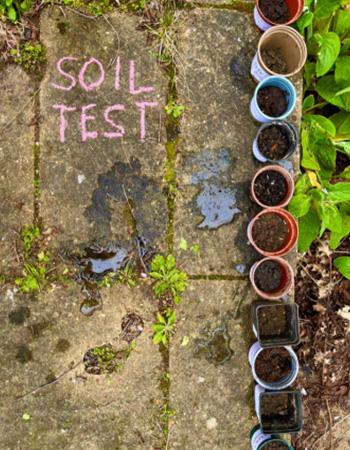
Living lab
Ultimately, it is envisioned that the Art Research Garden will become a ‘living lab’ micro-context for both the Goldsmiths research community and wider communities in Lewisham, south-east London and beyond to explore ecology, climate change, and the Earth crisis.
Ideas for the future include open days, artist residencies and a ‘Friends of Lewisham Way' stewardship group.
Read more about public engagement at Goldsmiths.